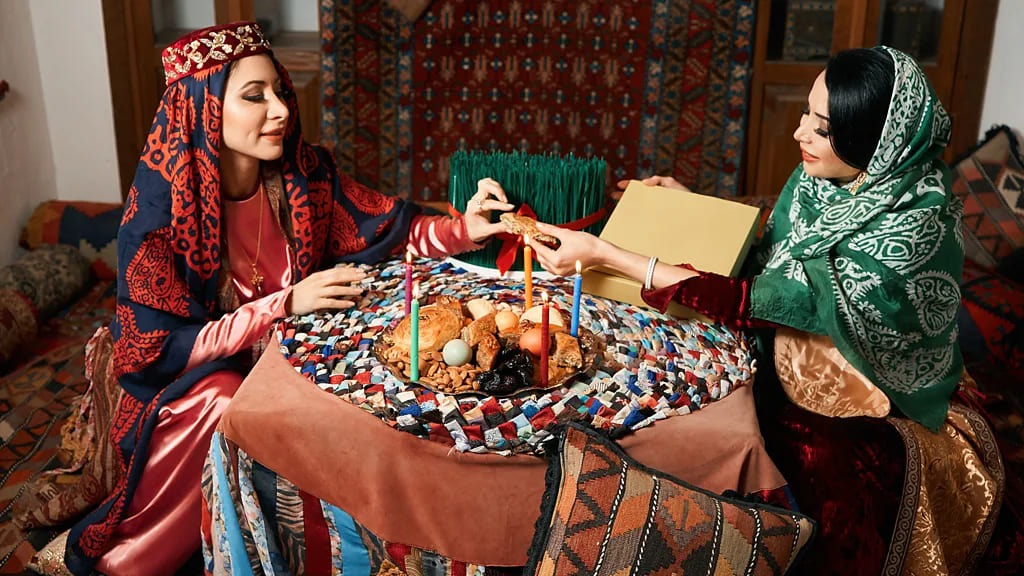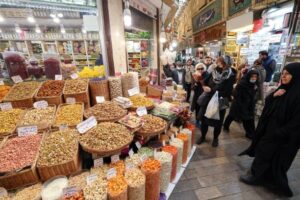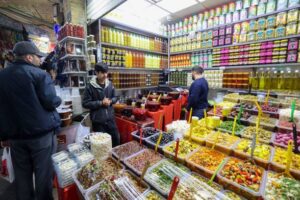Physical Address
304 North Cardinal St.
Dorchester Center, MA 02124
Physical Address
304 North Cardinal St.
Dorchester Center, MA 02124

Nowruz 2024: The significance of this age-old celebration has not diminished; instead, its values, such as embracing a fresh start each year and rekindling our bond with nature during challenging times, have become increasingly crucial.
The annual 13-day festival of Nowruz is currently underway, marking the arrival of spring. This celebration holds great significance for millions of individuals worldwide who have ancestral ties to the former Persian Empire. Persia, which is now known as Iran, once encompassed a vast territory stretching from Afghanistan and Pakistan to Egypt and the Balkan Peninsula.
The rich cultural heritage left behind by this empire includes the vibrant traditions of Nowruz. Despite its ancient origins dating back 3,500 years, Nowruz continues to hold relevance in the present day. Its teachings, such as the importance of an annual reset, the value of family, and the connection with nature during uncertain times, are considered more crucial than ever.
Originally, Nowruz was a holiday observed by followers of Zoroastrianism, an ancient monotheistic religion founded by the prophet Zoroaster around 500 BCE. During the reign of the Persian Empire (approximately 559-331 BCE), Nowruz served as a gathering where rulers from various subject countries would present gifts and pay homage to the king at Persepolis, the ruins of which can still be found in the Iranian city of Shiraz. This tradition allowed the kings to demonstrate their prosperity to their ancestors, making it an integral part of the holiday.

Although Zoroastrianism ceased to be the official state religion of the Persian Empire after the Arab conquest in 632 CE, Nowruz remained deeply rooted in the culture. Over time, it evolved into a secular celebration embraced by people of all faiths, including Christians, Jews, and Muslims, even under Islamic rule.
Presently, Nowruz is observed not only in Iran but also in countries like Afghanistan, Azerbaijan, India, Pakistan, Turkey, Uzbekistan, and others that were once influenced by Persian culture. Additionally, diaspora communities in North America, Europe, and various parts of the world continue to commemorate this joyous occasion.
As Nowruz traditions continue to spread, they have gained acceptance in the Western mainstream. Last year, Disney released an animated video featuring Mickey Mouse explaining the significance of Nowruz. Prominent American publications regularly showcase stories and recipes related to Nowruz cuisine. Additionally, the popular traveling dance party Disco Tehran, which has gained popularity in Los Angeles and New York, will be hosting Nowruz celebrations this year in Berlin, Paris, and London.
Nowruz, derived from the Persian language meaning “new day,” marks the beginning of spring and occurs at the moment of the spring equinox when the sun crosses the equator on its way north. This year, Nowruz will commence on March 20th at 06:36 in Tehran, 03:06 in London, and on March 19th at 23:06 in New York.
Nowruz customs vary across different regions of the world, each with its own unique characteristics. In Afghanistan, people indulge in a dessert called mewa, which consists of seven different dried fruits and nuts soaked in syrup. In Tajikistan and Kyrgyzstan, it is customary to place vessels filled with water around the house before the arrival of the new year. Furthermore, in Afghanistan, the national sport of buzkashi, similar to polo but played with the body of a goat instead of a ball, is enjoyed by riders on horseback.

The new year celebration not only marks the beginning of a new year but also acts as a unifying force that brings all Iranians together.
Haleh Esfandiari, the original director of the Middle East Program at the Woodrow Wilson International Center for Scholars in Washington DC, emphasizes the unifying and inclusive essence of Nowruz. She highlights that Nowruz is more than just a new year celebration; it acts as a unifying force that brings together Iranians of various religious, ethnic, and tribal backgrounds due to its national, rather than religious, significance.
Nowruz symbolizes renewal and fresh starts. Although the celebration officially starts at the equinox, the preparations start weeks in advance. To start the new year positively, it is crucial to have a clean home and a clear mind.
Different ways to celebrate Nowruz
Various cities across the globe, such as Dubai, Toronto, London, New York, and Los Angeles, offer numerous opportunities to celebrate and explore the traditions of Nowruz, particularly in areas with significant Iranian and diaspora Persian communities. Here are a few examples:
1. Disco Tehran will be organizing vibrant dance parties in Berlin, New York, Los Angeles, London, and Paris, commencing on 22 March.
2. For a day filled with family-friendly Nowruz activities, visit Parramatta in Sydney on 17 March.
3. London’s Lauderdale House is hosting an extensive month-long festival dedicated to Nowruz, featuring exhibitions, discussions, and captivating music.
To begin, the initial step involves thoroughly cleaning the entire household, a traditional ritual known as khoone takoone in Persian. This term translates to “shaking the house” and signifies the importance of a fresh start. Additionally, it is crucial to reconcile any lingering grudges by offering a gift of ajeel, a delightful mixture of dried fruits and nuts, to the offended party.
As a symbolic gesture mirroring the blossoming of nature, it is customary to sprout lentils and wheat in the weeks leading up to the celebration. Finally, on the Wednesday preceding Nowruz, individuals of all ages, from young children to elderly grandparents, partake in the tradition of leaping over a bonfire. This act serves as a means of purging any lingering negativity from the previous year, allowing for a renewed and positive beginning.
Nowruz presents a valuable opportunity to rejuvenate with its optimistic message of new beginnings. Yasmin Khan, a British cookbook author and broadcaster with Iranian heritage, views it as the start of her year. She finds strength in the rituals and symbolism associated with Nowruz, such as spring cleaning, sprout cultivation, and fire jumping. These practices ground her, connecting her to her ancestral culture, as well as to the seasons and the elements.
During Nowruz, people come together to honor their family, both past and present, and celebrate with feasts and visits. For Anna Fahr, an Iranian Canadian filmmaker, the social connection aspect of Nowruz holds utmost importance, especially in the aftermath of the Covid pandemic. She cherishes the opportunity to reconnect with her relatives and engage in meaningful conversations.

With friends in different locations, they even organize an online fire jump, where each person sets up candles in their respective apartments and jumps over them together. Nowruz truly emphasizes communal gatherings and the joy of being with loved ones.
On the final day of Nowruz, it is customary to pack a picnic and venture into the countryside to release lentil and wheat sprouts into flowing water, symbolizing a fresh start and bidding farewell to the previous year. This day allows for appreciating the outdoors after the long winter.
Persis Karim, the director of the Center for Iranian Diaspora Studies at San Francisco State University, sees Nowruz as a reminder of our interconnectedness with the natural world. The cyclical transition of seasons, marked by this ritualistic holiday, is deeply ingrained in our collective consciousness.
Nevertheless, as a result of climate change, the traditional practices of celebrating Nowruz that have been passed down for generations are undergoing changes, and this clear evidence might serve as a wake-up call for individuals to take notice. “Everywhere you turn, there are increasing temperatures, water scarcity, and the disappearance of various species,” Karim pointed out. “The flowers are blooming much sooner. Nowruz is facing challenges in certain aspects, and this could be associated with recognizing the fragility of our planet and our role in contributing to that fragility.”
Nowruz is currently facing certain challenges, which may be associated with our growing awareness of the fragility of our planet and our role in contributing to that fragility.
Maybe the most cherished aspect of Nowruz for those who celebrate it is the rejuvenating nature of the holiday traditions, especially during a time when concerns such as climate change, global politics, and social disconnection can be sources of unease. Rebecca Rahimi, a television producer based in New York, finds Nowruz to be an opportunity to pause and savor life’s simple pleasures. “It marks the arrival of spring, with its warm sunlight and a harmonious connection to nature. It’s a time to visit the park, have a picnic, and relish in a feeling of liberation,” she elaborated.



